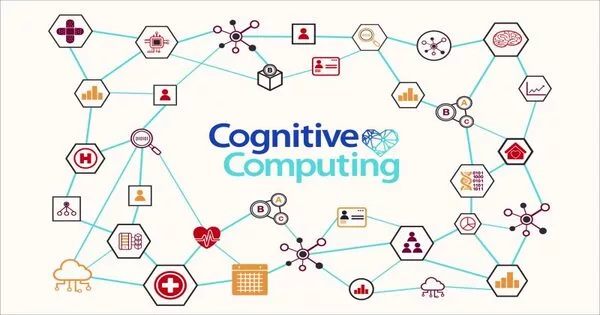Cognitive computing refers to the field of computer science and artificial intelligence (AI) that seeks to develop computer systems that can perform tasks that traditionally require human-like intelligence, such as understanding natural language, recognizing patterns, making decisions, and learning from experience.
Cognitive computing systems are designed to simulate human thought processes and can use a variety of techniques, including machine learning, natural language processing, computer vision, and knowledge representation. These systems are intended to be able to understand and reason with large amounts of complex, unstructured data in a way that is similar to how a human brain would process that data.
It refers to the use of reasoning, language processing, machine learning, and human capabilities that help regular computing better solve problems and analyze data. By learning patterns and behaviors and becoming more intelligent, a computer system can tackle complex decision-making processes.
Features of cognitive computing
One of the key goals of cognitive computing is to create systems that can interact with humans in a more natural and intuitive way. For example, cognitive computing systems could be used to develop virtual assistants that can converse with users in a more conversational manner, or to help businesses make better decisions by analyzing large amounts of data and providing insights and recommendations.
A cognitive computing technology platform adapts and makes sense of information, even unstructured information such as natural speech, using machine learning and pattern recognition. Cognitive computing typically provides the following attributes, which were developed by the Cognitive Computing Consortium in 2014, to achieve those capabilities:
- Learning that adapts: Cognitive systems must accommodate an influx of rapidly changing information and data that aids in the achievement of an evolving set of goals. The platforms process dynamic data in real-time and adjust to meet the needs of the environment and data.
- Human-computer interaction (HCI) is an essential component of cognitive machines. Users interact with cognitive systems and set parameters that change over time. Other devices, processors, and cloud platforms interact with the technology.
- Iterative and stateful: Cognitive computing systems identify problems by posing questions or bringing in additional data if a fixed query is incomplete or ambiguous. This is made possible by technology, which stores information about related situations and potential scenarios.
- Contextual data, such as time, syntax, domain, location, requirements, or a specific user’s tasks, profile, or goals, must be identified, understood, and mined by cognitive computing systems. They may use data from multiple sources, such as auditory, visual, or sensor data, as well as structured or unstructured data.
Disadvantages of Cognitive Computing
Because of cognitive computing’s limitations, it should be used with caution in its various and widespread applications. Security risks may exist because these systems handle large amounts of data and may be vulnerable to breaches. Another issue is the lengthy development time required for a highly complex technology to get off the ground. Companies with smaller development teams may find it more difficult to develop applications with integrated cognitive computing processes as a result of this.
Overall, cognitive computing is a rapidly evolving field that has the potential to transform many aspects of our lives, from healthcare and education to business and entertainment.
















